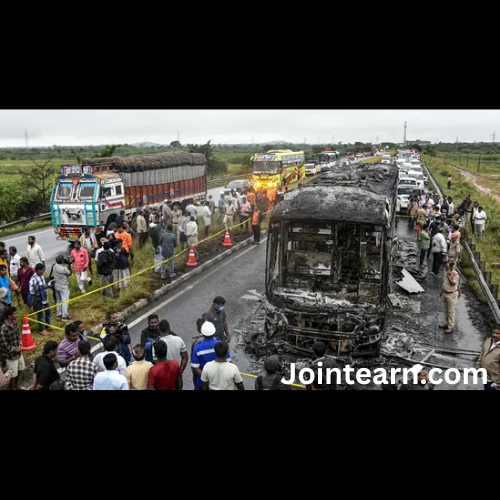Uttar Pradesh Chief Minister Yogi Adityanath on Sunday used the occasion of the ninth Deepotsav festival in Ayodhya to criticise opposition parties and highlight the city’s transformation into a symbol of faith and development. Speaking after inaugurating the festival, where he performed the ceremonial ‘Rajyabhishek’ (coronation) of Ram and Sita, including ‘pujan’, ‘vandana’, and ‘aarti’, Adityanath said that today “lamps are being lit where bullets were once fired,” referring to historical violence during the Ram Janmabhoomi movement.
The chief minister pointedly recalled the events of the early 1990s, when police firing occurred on ‘Kar Sevaks’ in Ayodhya during the agitation for the Ram temple, while the Samajwadi Party was in power under Mulayam Singh Yadav. “During the Ram Janmabhoomi movement in this very Ayodhya, Congress said Ram is a myth, while the Samajwadi Party fired bullets at Ram devotees,” he alleged. “Today, Uttar Pradesh does not have to face an identity crisis. We are now lighting lamps where bullets were once fired.”
Adityanath also took aim at opposition leaders for declining invitations to the consecration ceremony of the Ram temple in January 2024. “These are the same people who prostrate at Babar’s grave, but when they are invited to the Pran Pratishtha ceremony of Ram Mandir, they reject it,” he said. He further accused the opposition of attempting to foment communal discord, stating, “These are the same people who still try to create communal hatred by adopting the ‘divide and rule’ policy of the British.”
Highlighting Ayodhya’s transformation over the years, the chief minister noted the city now represents a confluence of heritage and development. “When we first decided to hold the Deepotsav in Ayodhya Dham in 2017, the intention was to show the world how lamps are lit. Today, lakhs of lamps are lit in Ayodhya, which has become a symbol of the resolve of every Indian. These are not just lamps, they also symbolise the victory of faith over 500 years of darkness,” he said, according to a press statement.
He added that the festival is a testament to historical struggles and ancestral resilience. “The lamp stands testimony to the insults that had to be faced and the battles our ancestors fought in these 500 years. Maryada Purushottam Shri Ram was seated in a tent then, but now as the ninth edition of Deepotsav takes place, Shri Ram is seated in his magnificent temple. Every lamp reminds us that truth can be disturbed, not defeated.”
The chief minister emphasised that Deepotsav demonstrates that no politics can imprison faith. He recalled that only a few thousand devotees used to visit Ayodhya, a city once marred by disorder and lack of infrastructure. Today, 6 to 10 crore devotees visit the city annually, coming from regions across India, including Kashmir, Kanyakumari, Kohima, and Kutch. “People feel proud to come to Ayodhya today,” Adityanath said.
He also spoke about the historical context of the temple, noting that it was locked from 1950 until 1986, during which efforts were made to restrict worship at Lord Ram’s birthplace. “But with Lord Ram seated in his magnificent temple, today every Sanatan devotee rejoices with pride that the will of our forefathers has been fulfilled,” he said.
This year, over 26 lakh lamps are being lit across 56 ghats in Ayodhya, with approximately 28 lakh lamps arranged in advance in an effort to set a world record, officials said. Adityanath said that the festival not only celebrates religious devotion but also showcases the city’s development in line with resolutions of Prime Minister Narendra Modi. “Ayodhya will now establish itself as the spiritual capital of the world, and the faith capital of India,” he added.
Through his speech, the chief minister framed Deepotsav as a celebration of historical justice, religious identity, and civic transformation. The festival, marked by the lighting of millions of lamps, serves as both a religious observance and a political statement, illustrating the BJP-led state government’s efforts to integrate heritage, faith, and development in Ayodhya.


Leave a Reply